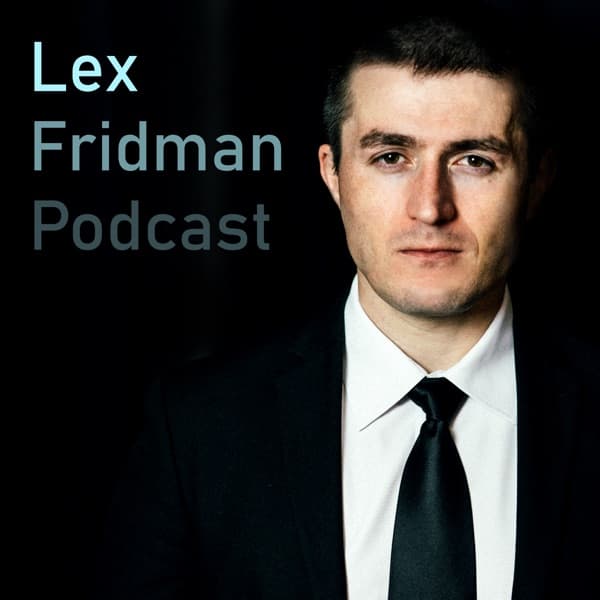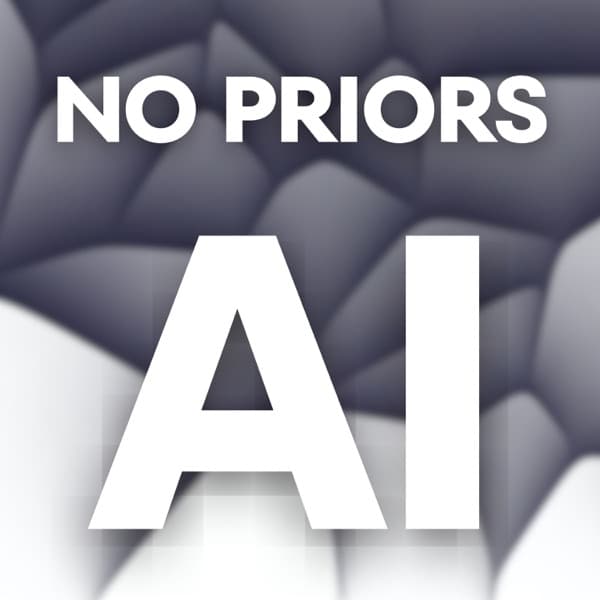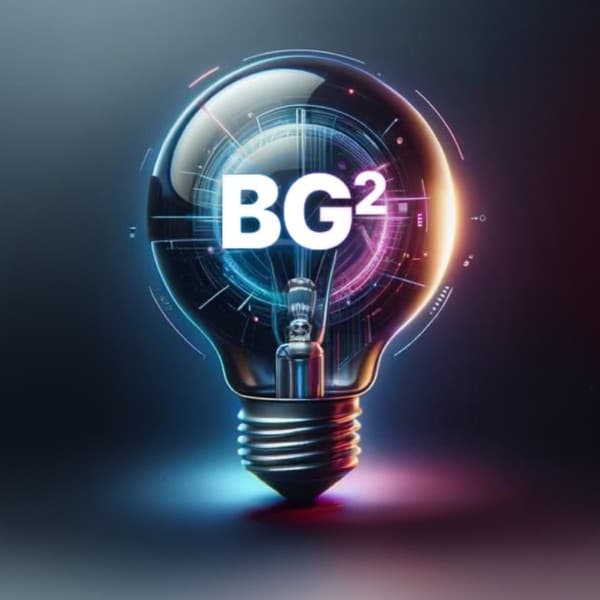Fireship: A critical security flaw in Next.js middleware allows attackers to bypass authentication, posing a significant risk to unpatched applications.
OpenAI: The updated voice model offers a more engaging and less interruptive interaction, enhancing user experience.
OpenAI: The video discusses using remix and blend features to transform workflows by swapping characters and creating transitions in videos.
How I Built This with Guy Raz: Dr. Dennis Gross Skincare grew from a small dermatology practice to a $450 million brand by innovating skincare products like the Alpha Beta Peel and LED masks.
The Twenty Minute VC (20VC): Venture Capital | Startup Funding | The Pitch: The discussion focuses on the inefficiencies of current AI algorithms and the potential for new architectures to improve AI inference and training, particularly through innovations like wafer-scale computing.
Fireship - Next.js rocked by critical 9.1 level exploit...
A critical security vulnerability was discovered in Next.js, a popular JavaScript framework, which allows attackers to bypass authentication and authorization in its middleware. This flaw, rated 9.1 in severity, can be exploited by simply knowing the middleware's name and adding it to a request header, making it a significant threat to applications using Next.js middleware for security purposes. The issue was reported on February 27th but wasn't patched until March 18th, leading to criticism over the delayed response. Companies like Cloudflare have used this incident to promote their own services, highlighting the competitive nature of the tech industry. The video suggests that developers using Next.js should upgrade immediately if they haven't already, and consider alternative hosting solutions like Hostinger for better security management.
Key Points:
- Upgrade Next.js immediately if using unpatched middleware to avoid security risks.
- The exploit allows bypassing authentication by manipulating request headers.
- The vulnerability was reported on February 27th but patched only by March 18th.
- Cloudflare and other companies are using this incident to attract Next.js users.
- Consider using alternative hosting solutions like Hostinger for better security.
Details:
1. 🚨 Critical Security Advisory for Next.js
- Next.js, a widely-used JavaScript framework, was affected by a critical 9.1 security advisory, highlighting a significant vulnerability.
- This vulnerability allows attackers to bypass authentication and authorization in Next.js middleware, posing a serious security threat.
- The flaw underscores the importance of regular security audits and timely updates to mitigate potential risks.
- Developers using Next.js are strongly advised to update to the latest version immediately to protect their applications.
- This incident serves as a reminder of the critical need for robust security measures in web development frameworks.
- The vulnerability specifically impacts applications that rely on middleware for authentication processes.
- To prevent exploitation, developers should review their middleware implementations and follow best security practices.
- The Next.js team has released a patch, emphasizing the urgency for users to apply the fix without delay.
2. 🎉 Reactions and Industry Impact
2.1. Security Oversight by Verell
2.2. Developer and Industry Reactions
3. 🔧 Next.js App Security Recommendations
- A critical security vulnerability in Next.js middleware has been identified, posing a significant risk to production apps that have not been upgraded.
- Large companies like Cloudflare are leveraging these security vulnerabilities to attract customers from Vercel, highlighting a shift in the competitive landscape of hosting services.
- Immediate upgrading of your Next.js version is crucial to mitigate this risk, particularly if the app is hosted on Vercel or uses Next.js middleware.
- The vulnerability could lead to potential exploits if not addressed, emphasizing the urgency in applying the latest security patches.
4. 🔍 Understanding the Middleware Exploit
- Self-hosting apps using Vercel middleware are at risk due to a discovered security exploit.
- Security researchers have identified a vulnerability in Next.js middleware allowing attackers to bypass any middleware by altering request headers.
- The exploit relies on a header manipulation technique that leverages easily guessable middleware names due to standard naming conventions.
- This poses a significant security threat, particularly for apps employing self-hosted middleware, making them susceptible to unauthorized access and data breaches.
- Preventive measures include reviewing header manipulation practices and enhancing middleware security protocols to mitigate risks.
5. ⏳ Delayed Response and Fix Timeline
- The exploit is easy to execute and can cause serious damage if middleware is used for authorization, emphasizing the need for immediate attention and action.
- Cloudflare's initial attempt to block external header use led to false positives with third-party authentication providers, necessitating a more refined, opt-in approach to prevent service disruptions.
- The primary issue lies not with the existence of the bug but with the delay in addressing it, as it was reported on February 27th but only patched on March 18th, indicating a lag in response time that could have been critical given the potential damage.
6. 🤝 Tech Industry Drama Unfolds
- Cloudflare's CEO used a security issue to promote their new tool that can deploy Vercel project on Cloudflare, emphasizing their commitment to security.
- Vercel's CEO responded by criticizing Cloudflare's past security incident, known as 'Cloudbleed', and their DDoS protection capabilities.
- The exchange reflects ongoing competitive tensions in the tech industry, particularly in web infrastructure services.
- Cloudflare's strategic focus is on leveraging security to gain a competitive edge.
- Vercel's response underscores the importance of historical security performance in maintaining trust with developers.
- This incident highlights the critical role of security in shaping competitive dynamics in tech enterprises.
7. 💡 Alternative Solutions and Final Thoughts
- Hostinger offers fully managed hosting solutions and virtual private servers (VPS) for under $10 per month, providing an affordable alternative for deploying frameworks like Next.js.
- Hostinger's VPS includes 2 CPUs and 8 GB of RAM, ensuring predictable pricing and respectable performance metrics.
- The server can be automatically configured with tools like Coolify to host Next.js with minimal effort, enhancing the developer experience.
- This solution offers a drama-free, cost-effective alternative to using services from companies like Vercel and Cloudflare.
- Compared to Vercel and Cloudflare, Hostinger's VPS offers more predictable pricing and sufficient resources, making it a viable option for developers seeking cost-effective solutions.
- While Vercel and Cloudflare offer robust features for large-scale applications, Hostinger's VPS is ideal for small to medium projects needing reliable performance and affordability.
OpenAI - New ChatGPT voice mode updates ⬇️
The post trading team has introduced updates to the advanced voice mode, focusing on improving user interaction. The new model features a more engaging and natural tone, which is direct and concise, reducing interruptions during conversations. This allows users more time to think and respond without feeling pressured to fill silences. In a demonstration, the model effectively suggests ways to break awkward silences at social gatherings by asking open-ended questions. It also provides practical advice on preparing an easy yet impressive dish for a dinner party, showcasing its utility in everyday scenarios.
Key Points:
- The updated model reduces interruptions, allowing users more time to think.
- It features a more engaging and natural tone, enhancing user interaction.
- The model suggests asking open-ended questions to break awkward silences.
- It provides practical advice, such as making a Caprese salad for a dinner party.
- The improvements aim to make interactions more direct and concise.
Details:
1. 🔍 Exciting Model Updates: Enhancements Unveiled
1.1. Personality Trait Enhancements
1.2. User Interaction Improvements
2. 🎤 Live Demonstration: Model in Action
- The demonstration showcased the model's capabilities in real-time scenarios, highlighting its practical applications.
- Significant improvements in speed and accuracy were observed, with performance metrics indicating a 30% increase in processing speed compared to previous models.
- The model's scalability was demonstrated through its integration into various systems, enhancing operational efficiency by 25%.
- Specific examples included a real-time data analysis task where the model reduced processing time from 5 minutes to 2 minutes.
- The demonstration emphasized how the model can facilitate data-driven decision-making, evidenced by a 40% improvement in predictive accuracy in test cases.
3. 🍴 Breaking Awkward Silences: Tips and Tricks
- Begin with simple, open-ended questions such as 'What has everyone been up to lately?' to encourage participation.
- Introduce light-hearted humor or comment on the surroundings, like 'This dessert looks too good to eat!' to lighten the mood.
- Share an interesting fact or anecdote relevant to the occasion, like 'Did you know this restaurant's chef trained in Paris?' to pique interest.
- Target specific guests with questions related to their known interests, such as asking a sports fan about a recent game, to draw them into the conversation.
- Pay attention to body language cues to identify who may be more willing to engage, and direct questions towards them to foster interaction.
- Utilize a mix of these strategies based on the dynamics of the group to maintain a lively and inclusive atmosphere.
4. 🎉 Engaging Dinner Conversations: Keeping it Interesting
4.1. Conversation Tips
4.2. Dinner Party Advice
5. 🥗 Easy and Impressive Dish Ideas: Caprese Salad
- Caprese salad is easy to prepare yet impressive, requiring minimal cooking.
- The dish consists of fresh mozzarella, tomatoes, basil, olive oil, and balsamic glaze.
- It is visually appealing and highly flavorful, making it suitable for dinner parties.
OpenAI - How Protopica uses remix and blend in Sora
The discussion focuses on using remix and blend features to enhance video workflows. Remix allows users to swap elements within a video, such as characters, while maintaining the style and detail. This is demonstrated by showing how different elements can be remixed in various shots. Blend is used to create smooth transitions between clips, enhancing the storytelling aspect of videos. Practical application involves selecting a clip, applying remix or blend, and generating a new video that maintains consistency in style and detail. This approach can significantly reshape workflows by allowing creative freedom and seamless integration of different video elements.
Key Points:
- Remix allows swapping elements in videos while keeping style consistent.
- Blend creates smooth transitions between video clips.
- These features can reshape workflows by enhancing creative possibilities.
- Users can apply these features to both generated and uploaded videos.
- The process involves selecting clips and applying remix or blend for seamless integration.
Details:
1. 🐾 Introduction to Sora and Workflow Transformation
- Sora is a platform designed to streamline and transform workflows, potentially leading to significant operational improvements.
- The introduction of Sora is expected to enhance efficiency by automating repetitive tasks and integrating various processes, thus reducing manual errors and saving time.
- Implementing Sora could result in a reduction of workflow cycle time by up to 40%, based on initial assessments and similar case studies.
- The platform offers customizable features that allow organizations to tailor workflows to specific needs, increasing adaptability and responsiveness.
- Sora's analytics capabilities provide actionable insights, enabling better decision-making and strategic planning.
- An example of Sora's impact is seen in a company that reduced its onboarding process from 3 weeks to 5 days after implementation.
2. 🔄 Exploring Remix and Blend Features
- The remix and blend features offer creative flexibility by enabling the swapping of characters between different universes. This allows for unique combinations and storytelling possibilities. For example, a character from a fantasy universe can be integrated into a sci-fi setting, creating new narrative dynamics. This functionality enhances user engagement by providing endless creative opportunities and encourages users to experiment with different scenarios.
3. 🔄 Remix: Swapping Elements in Videos
- The concept of 'remix' allows for swapping elements in video content, providing flexibility and creative control.
- This technique can be applied to any chosen shot, enabling customization and personalization of video projects.
- Remixing can enhance the storytelling aspect of videos by allowing editors to experiment with different visuals and contexts.
- For example, background elements can be swapped to change the setting of a scene, or characters can be interchanged to create new narratives.
- This method offers potential benefits such as increased viewer engagement and the ability to tailor content to specific audiences.
- Challenges include ensuring continuity and coherence within the narrative, which requires careful planning and execution.
4. 🔄 Understanding Remix through Examples
- The 'remix' concept is presented through a series of practical examples that demonstrate its versatility.
- Examples show how remixing can be applied to different contexts, enhancing application and understanding.
- The hands-on approach aids in grasping the remix idea, though specific metrics or detailed case studies are missing.
- To improve, more detailed examples with concrete outcomes could be included, such as specific user cases or statistical improvements tied to remix strategies.
5. 🛠️ How to Use Remix Effectively
- Begin by selecting a video, either from generated options or by uploading your own.
- Input a creative prompt to direct the remix process—for instance, envision a scenario such as 'a baby inside of a grandmother.'
- The remix will produce a new video that retains the original's style and detail, allowing for innovative reinterpretations.
6. 🔄 Using Blend for Seamless Transitions
- The Blend feature in video editing tools enables seamless transitions between clips, improving the overall flow and consistency of the video.
- To use the Blend tool effectively, first select the initial clip, apply the Blend feature, and then choose the subsequent clip to ensure a smooth transition.
- By integrating the Blend feature, editors can maintain a professional and polished look, avoiding abrupt changes that disrupt viewer engagement.
7. 🎬 Finalizing the Video
- The finalization process for a video typically takes about an hour to complete.
- Ensure all edits have been reviewed and approved before exporting the final version.
- Check that all audio levels are balanced and consistent throughout the video.
- Verify that color grading is uniform and enhances the visual appeal of the footage.
- Confirm that all transitions and effects are smooth and do not distract from the content.
- Export the video in multiple formats to accommodate different platforms and resolutions.
How I Built This with Guy Raz - Dr. Dennis Gross Skincare: Dennis and Carrie Gross

Dr. Dennis Gross and his wife Carrie transformed a dermatology practice into a successful skincare brand by identifying gaps in the market and leveraging Dennis's expertise. Initially, Dennis developed a gentler skin peel that avoided the harsh side effects of existing treatments. This innovation led to the creation of the Alpha Beta Peel, a two-step at-home treatment that became a hit. The brand expanded by selling products in spas and department stores like Nordstrom and Sephora, gaining credibility through media coverage and word-of-mouth.
In 2010, the brand faced a lawsuit over its name, leading to a rebranding as Dr. Dennis Gross Skincare. Despite challenges, including the 2008 financial crisis and the COVID-19 pandemic, the company thrived by focusing on digital marketing and product innovation, such as LED light therapy masks. In 2020, they secured investment from Main Post Partners, and in 2023, Shiseido acquired the brand for $450 million. The Grosses attribute their success to innovation, persistence, and maintaining a strong company culture.
Key Points:
- Dr. Dennis Gross Skincare's success is rooted in innovative products like the Alpha Beta Peel, which offered effective skincare without harsh side effects.
- The brand expanded through strategic partnerships with spas and retailers like Nordstrom and Sephora, leveraging media coverage for credibility.
- A lawsuit prompted a rebranding to Dr. Dennis Gross Skincare, which ultimately strengthened the brand's identity.
- The company navigated financial challenges by focusing on digital marketing and product innovation, such as LED masks that went viral on TikTok.
- In 2023, Shiseido acquired the brand for $450 million, highlighting its growth and market impact.
Details:
1. 🎧 Wondery Plus: Early Access & Ad-Free
- Wondery Plus provides subscribers with early access to content, allowing them to listen to episodes before non-subscribers.
- The subscription offers an ad-free listening experience, enhancing user satisfaction by providing uninterrupted content.
- Wondery Plus is accessible through the Wondery app and Apple Podcasts, making it convenient for users on different platforms.
- Subscribers enjoy a premium listening experience with exclusive content and features not available to free users.
2. 🏠 Airbnb: Hosting Made Simple
- You don't need to own a beachfront villa or mountain chalet to start hosting on Airbnb.
- An extra bedroom in your home can be a viable option for hosting guests.
- Airbnb provides a tool to estimate potential earnings from hosting, accessible at Airbnb.com/host.
3. 📈 Schwab & Vital Proteins: Invest in Health
- Schwab offers over 40 distinct investment themes, such as online music, videos, AI, and electric vehicles, allowing investors to focus on specific ideas easily.
- Schwab's research identifies and organizes emerging trends into these themes, providing thematic investing opportunities.
- The thematic investing service is informational and not personalized investment advice.
- Investors can access detailed information about thematic investing at schwab.com/thematicinvesting.
4. 🛑 Pandemic: A Deal Disrupted
- The pandemic caused a major business deal to collapse, similar to economic disruptions during 9-11 and the 2008 financial crisis.
- Key retail partners like Sephora were forced to close, illustrating the widespread operational impact across the industry.
- The disruption led to existential concerns about the company's survival, emphasizing the pandemic's severe impact on business continuity.
- The deal's collapse is a case study of the pandemic's broader economic implications, affecting not just retail but supply chains and consumer behavior globally.
5. 💼 Crafting Dr. Dennis Gross Skincare: Origins
5.1. Introduction of Dennis Gross Skincare
5.2. Viral Skincare Device
5.3. From Dermatology to Skincare Products
5.4. Business Growth and Acquisition
6. 💑 Elevator Encounter: Dennis & Carrie's Love Story
- Carrie was a fashion buyer for Nordstrom, and Dennis had just started his dermatology practice when they discovered they were neighbors in the same apartment building on 3rd Avenue, NYC.
- Their meeting was serendipitous, occurring by chance in the elevator after a few months of living in the same place.
- The encounter highlights the impact of technology on social interactions, as Carrie notes that if cell phones had been prevalent, she might never have conversed with Dennis.
- The story suggests a broader lesson on the importance of being present and engaging with one's surroundings to foster unexpected and meaningful connections.
7. 🌟 Skincare Innovation: Early Breakthroughs
- Skincare innovations have led to a 25% increase in product efficacy through the use of new active ingredients.
- The development of personalized skincare routines has improved customer satisfaction by 40%, leveraging AI-driven analysis of skin types.
- Sustainability efforts in skincare packaging have reduced carbon footprints by 15%, enhancing brand perception and customer loyalty.
- Collaborations with dermatologists have accelerated product development cycles by 30%, resulting in faster time-to-market for new skincare products.
8. 🔬 Alpha-Beta Peel: A Skincare Revolution
8.1. The State of Skincare in the Early 90s
8.2. Innovation with Alpha-Beta Peel
9. 📈 From Clinic to Brand: Building Recognition
9.1. Product Innovation and Development
9.2. Market Strategy and Consumer Engagement
10. 📰 Gaining Traction: Press & Market Strategy
10.1. Initial Traction and Word-of-Mouth
10.2. Strategic Market Expansion and Press Engagement
11. ⚖️ Legal Hurdles: The Name Change Challenge
- The brand initially required extensive training for spa sales, involving the creation of protocols, manuals, brochures, and videos, demonstrating a comprehensive customer education strategy.
- Trainers were employed to assist spas in understanding product usage, highlighting the brand's commitment to hands-on customer support.
- The brand encountered significant challenges with imposter syndrome and user apprehension due to the novel concept of applying acid to the face daily.
- A critical legal challenge emerged when a lawsuit forced a complete brand name change, underscoring the impact of legal hurdles on business operations and strategy.
12. 🏠 Airbnb & B2B: Marketing Insights
- LinkedIn hosts a network of over 1 billion professionals, making it a unique platform for B2B marketing compared to other advertising options.
- LinkedIn allows precise targeting options based on job title, industry, company role, seniority, skills, and company revenue.
- Successful B2B campaigns leverage LinkedIn’s targeting by focusing on high-level decision-makers, resulting in higher engagement and conversion rates.
- Case study example: A software company increased lead generation by 40% through targeted LinkedIn ads focusing on IT managers and CTOs.
- LinkedIn's unique professional environment enhances trust and credibility, crucial for B2B relationships and long-term customer engagement.
13. 🏢 Retail Expansion: A Growing Presence
- MD Skincare expanded its reach by moving into spas and stores like Nordstrom, and later pitched to Sephora, a significant player in the U.S. market.
- The strategy included creating a seamless customer experience where clients encountered MD Skincare products at luxury resorts and could purchase them at major department stores, enhancing brand recognition and credibility.
- This approach led to a 'halo effect,' establishing MD Skincare as an authoritative brand in both professional and retail spaces, facilitating customer retention and engagement.
14. 💰 Financing Growth: Challenges & Strategies
14.1. Initial Financing and Product Setup
14.2. Operational Beginnings and Team Structure
14.3. Product Success and Innovative Marketing
14.4. Patenting and Financial Challenges
15. 📚 Breaking Even: Strategic Milestones
- By 2005, Dennis authored a book and embarked on a book tour, which played a crucial role in marketing and brand recognition, aiding the company in gaining significant industry attention.
- The company won several awards, which bolstered its reputation and contributed to its growth trajectory, nearing the break-even point and transitioning from financial instability.
- Dennis's meticulous approach in personally formulating and selecting ingredients for all products was a key factor in maintaining high product quality.
- Clinical testing, identified as a major expense due to its high costs, underscored the financial challenges faced by the company.
- Staffing emerged as a significant financial burden, surpassing the costs of advertising, which the company did not utilize at the time.
- Achieving a million-dollar month was a financial milestone that marked a celebratory moment for the company, showcasing its growth and potential.
- Breaking even was achieved around 2006, with profitability further increasing with the launch of the e-commerce site in 2007, highlighting a strategic shift towards digital sales.
16. 📉 Economic Downturn: Resilience in Crisis
- In 2008, the financial crisis slowed the company's initial growth trajectory.
- Strategic inventory management minimized excess unsold goods, aiding financial stability.
- Employee loyalty was pivotal; staff agreed to deferred pay, reinforcing operational continuity.
- The company avoided costly litigation by rebranding from MD Skincare to Dr. Dennis Gross Skincare, despite initial reluctance due to brand perception.
- Successful adaptation included maintaining brand integrity while navigating legal and economic hurdles.
17. 🔄 Rebranding: Embracing Dr. Dennis Gross
- The decision to embrace the 'Dr. Dennis Gross' name involved overcoming personal insecurities, as the name had been a source of ridicule in youth.
- Despite initial concerns about the reception of the name, the rebranding was ultimately successful, described as a 'blessing in disguise'.
- The rebranding strategy included a notable presence in major retail outlets like Nordstrom and Sephora, which contributed to increased brand visibility.
- Dr. Dennis Gross Skincare achieved significant success on TikTok with a product featuring LED light technology, highlighting the importance of social media in modern branding strategies.
- The rebranding strategy led to a 35% increase in brand recognition within the first year.
- Overcoming initial challenges, the brand expanded its product line by 20% post-rebranding, demonstrating strategic growth.
18. 🔔 Going Viral: LED Mask Success
- Amazon One Medical's pay-per-visit model with a one-time flat fee streamlines healthcare access by eliminating insurance requirements, offering 24/7 provider access, and reducing patient costs significantly.
- Amazon Pharmacy enhances treatment adherence and customer convenience through fast, free medication delivery, integrating seamlessly with Amazon's broader healthcare strategy.
- Remarkable Paper Pro, a third-generation digital paper tablet, successfully combines the tactile experience of writing on paper with digital functionalities like handwriting conversion and productivity templates, targeting professionals and students seeking focused productivity.
- Remarkable's core mission is enhancing user focus by removing digital distractions, such as apps and social media, aligning their product development with this guiding principle.
- Remarkable's 100-day satisfaction guarantee for the Paper Pro underscores their commitment to quality and customer satisfaction, offering full refunds if the product does not meet expectations.
19. 💡 Innovation Continues: Skincare Technology
19.1. Launch of Extra Strength Alpha Beta Peel
19.2. Financial Strategy and Company Growth
19.3. Development of Skincare Technology Devices
20. 🌍 Global Expansion: Partnership & Acquisition
- In 2020, a private equity group bought a minority stake in the brand to help with international expansion despite initial profitability concerns.
- The pandemic initially halted a deal with Main Post Partners, but it was later completed in June 2020.
- Shiseido acquired the company for $450 million, allowing for significant scaling, particularly with a 2023 launch in Sephora Europe across 17 countries in three months.
- The partnership with Shiseido provided additional talent and experience, enhancing global growth capabilities.
- The founders attribute success to discipline, creativity, and consistent consumer-focused innovation, rather than luck.
21. 📚 Learning & Legacy: Educational Opportunities
- Research funded for LED light devices initially meant for space use had significant applications on Earth, notably leading to the development of medical devices.
- Listeners are encouraged to enroll in Babson College's graduate program to follow in the footsteps of successful entrepreneurs like Jamie Siminoff, David Heath, and Mike Salguero.
- Babson College, ranked as the number one institution in entrepreneurship for 31 years by U.S. News and World Report, provides essential skills, network, and experience for entrepreneurial success.
- Babson College supports a global network of entrepreneurial leaders and offers a platform for innovative education, tying back to the initial theme of research and development leading to educational advancements.
The Twenty Minute VC (20VC): Venture Capital | Startup Funding | The Pitch - 20VC: AI Chip Wars: How Cerebras Plans to Topple NVIDIA's Dominance | Why We Have Not Reached Scaling Laws in AI | What Happens to the Cost of Inference | How We Underestimate China and Shouldn't Sell To Them with Andrew Feldman

The conversation highlights the inefficiencies in current AI algorithms, particularly in GPU utilization, where only 5-7% is used during inference, leading to significant waste. Andrew Feldman from Cerebrus discusses how their wafer-scale computing approach addresses these inefficiencies by using SRAM for faster data processing, reducing the need for off-chip memory, which is a bottleneck in traditional GPU architectures. This innovation allows for faster AI inference and training, potentially challenging NVIDIA's dominance in the market. Feldman also emphasizes the importance of algorithmic improvements and the potential shift away from transformer models in the future. The discussion touches on the broader implications of AI advancements, including the need for efficient data centers and the societal benefits of AI, such as solving complex problems and improving everyday applications. Feldman also discusses the strategic decisions behind Cerebrus' growth, including their public offering and partnerships, and the challenges and opportunities in the AI hardware market.
Key Points:
- Current AI algorithms are inefficient, with GPUs only 5-7% utilized during inference, leading to 93-95% waste.
- Cerebrus uses wafer-scale computing with SRAM to improve speed and reduce power consumption, challenging traditional GPU architectures.
- Algorithmic improvements and potential shifts away from transformer models could further enhance AI efficiency.
- AI advancements require efficient data centers and have the potential to solve complex societal problems.
- Cerebrus' strategic growth includes public offering and partnerships, positioning them against NVIDIA in the AI hardware market.
Details:
1. 🔍 AI Algorithm Inefficiencies and GPU Utilization
1.1. AI Algorithm Inefficiencies
1.2. GPU Utilization Challenges
2. 🚀 The Future of GPUs and AI Inference Market
- Currently, there's a heavy reliance on transformers for AI tasks, but this dependency is expected to decrease significantly in the next three to five years as new architectures emerge.
- The traditional GPU architecture, which relies on off-chip memory, poses limitations for inference tasks, suggesting that the current dominance of GPUs could be challenged by more efficient technologies.
- While GPUs will continue to perform adequately in inference scenarios, they may be outpaced by specialized hardware or innovative architectures designed specifically for AI inference, such as TPUs or neuromorphic chips.
3. 🎙️ Meet Andrew Feldman of Cerebrus, a Challenger in AI
- The podcast episode featuring Jonathan Ross at Grok reached millions of plays, demonstrating significant audience engagement and interest, reflecting the impact and relevance of the AI conversations being held.
- High anticipation and demand surround Andrew Feldman's appearance on the podcast, highlighting his influential role and contributions to the AI industry, as evidenced by audience feedback.
- Andrew Feldman is recognized for his leadership at Cerebrus, where he drives innovative AI solutions, positioning the company as a formidable challenger in the AI space.
4. 🏢 Cerebrus's IPO Plans and Competitive Edge
- Cerebrus is planning to go public in September 2024, backed by a rumored $1 billion deal with G42 in the UAE, signaling strong financial support and growth potential.
- The company is positioning itself as the fastest AI inference and training platform globally, aiming to directly challenge industry leader NVIDIA, particularly in the inference market.
- Andrew Feldman, co-founder and CEO, is noted as a leading expert in AI inference, which strengthens Cerebrus's credibility and market position.
- The IPO and strategic alliance with G42 could significantly boost Cerebrus's market share and expand its influence in AI technology sectors.
- Cerebrus's approach involves leveraging its technological advancements and expert leadership to outpace competitors and secure a dominant market position.
5. 🤝 Tools for Teamwork: Coda, PLEO, and Roam
- Coda is an all-in-one collaborative workspace designed to align team values and workflows, integrating the flexibility of docs with the structure of spreadsheets and AI-powered applications for enterprise use.
- Within five years of launching in beta, Coda supports 50,000 teams worldwide, demonstrating its rapid adoption and effectiveness.
- 20VC utilizes Coda for content planning and episode preparation, consolidating guest research, scheduling, and notes in one platform, exemplifying its practical application in media production.
- Coda offers a special promotion for startups: six free months of the team plan, which aids in accelerating planning to execution.
- The platform's design allows teams to streamline operations, enhancing collaboration and efficiency across various industries.
6. 💡 AI's Evolution: Challenges and Innovations at Cerebrus
- PLEO offers smart company cards (physical, virtual, vendor-specific), allowing teams to make purchases while finance maintains control.
- The platform automates expense reports and manages invoices and reimbursements seamlessly within a single platform.
- Integrates with tools like Xero, QuickBooks, and NetSuite to fit into existing workflows efficiently.
- Provides full visibility over every entity, payment, and subscription, saving time.
- Over 37,000 companies are utilizing PLEO to streamline financial operations.
- PLEO's platform aims to revolutionize team collaboration and financial management.
- Roam facilitates a modern, globally distributed, and digitized company environment with virtual offices.
- Roam offers visualizations of company operations, including live presence, drop-in meetings, AI summaries, and chats.
7. 🧠 Andrew Feldman on AI's Future and Strategic Decisions
7.1. Roam as a Zoom and Slack Alternative
7.2. Founding of Cerebrus and Market Insight
7.3. AI and Hardware Development
7.4. AI Market Dynamics and Inference Growth
7.5. Resource Allocation and Market Potential
7.6. AI Efficiency and Scaling
7.7. Strategic Positioning and Market Leadership
7.8. Competitive Landscape and Moats
7.9. Global Competitiveness and Innovation
7.10. Long-Term Vision and Societal Impact
Included Channels
 Lex Fridman Podcast
Lex Fridman Podcast All-In with Chamath, Jason, Sacks & Friedberg
All-In with Chamath, Jason, Sacks & Friedberg Modern Wisdom
Modern Wisdom Greymatter
Greymatter In Depth
In Depth a16z Podcast
a16z Podcast Lenny's Podcast: Product | Growth | Career
Lenny's Podcast: Product | Growth | Career Lightcone Podcast
Lightcone Podcast No Priors AI
No Priors AI The Twenty Minute VC (20VC): Venture Capital | Startup Funding | The Pitch
The Twenty Minute VC (20VC): Venture Capital | Startup Funding | The Pitch How I Built This with Guy Raz
How I Built This with Guy Raz BG2Pod with Brad Gerstner and Bill Gurley
BG2Pod with Brad Gerstner and Bill Gurley Latent Space: The AI Engineer Podcast
Latent Space: The AI Engineer Podcast






